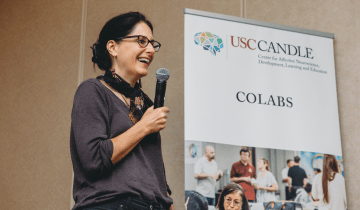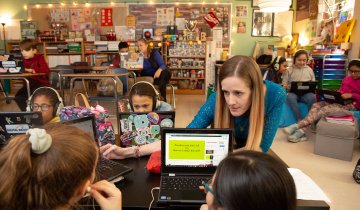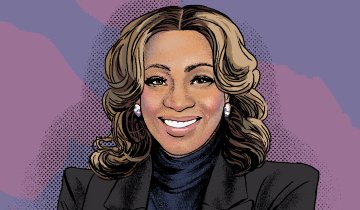Eat healthy, exercise and be well. Kids have heard these messages before, but as the Joint Education Project’s STEM program manager for the Young Scientists Program (YSP), I wanted to present the maxims with a twist, teaching students about how to stay fit and have a healthy diet in space. Along with my staff of teaching students, I recently spent three hours after school relaying this important message to 40 fourth and fifth graders at Norwood Elementary School.
“You have to eat lots of fruits and vegetables in space to stay strong,” said Liliana, a fourth grader. Kids engaged in hands-on activities that introduced them to the types of exercises astronauts do to maintain their muscle mass and bone density in space. They also learned how astronauts managed to eat fruits and vegetables and proteins during their missions. “I learned that astronauts eat fruits and vegetables too,” said Melvin, a fourth grader.
We relied on the tools of a selected STEM (Science, Technology, Engineering and Math) field, along with inquiry-based science pedagogy. I also derived inspiration from the MAT@USC program to devise the curriculum for the studio. I found my passion for science education extends past the programs and what is put on paper, and it has manifested itself in science-themed attire: I wore a space dress with all the planets on it to match the event.
The afterschool Health and Fitness Studio consisted of seven “space stations” that were managed by my staff—the YSP teaching assistants. I wanted them to convey a realistic example of each station by showing video of astronauts on the International Space Station doing each activity. Geoff Kusaka, a junior majoring in human biology, talked about maintaining a healthy diet by introducing students to dehydrated foods and showing students a video of how astronaut Chris Hadfield hydrated his spinach. During this station, students created their own vegetable diets using the dehydrated foods and rehydrated them by adding water. “Some of the food astronauts eat is dry, and they had to add water to it so they can eat it,” said Brandon, a fourth grader at Norwood.
Krupa Patel, a junior neuroscience major, talked about the importance of food preservation and helped students vacuum seal their own bag of dehydrated space food to take home. Sophia Nguyen, a freshman biology major, put the fourth and fifth grade students’ problem-solving skills to the test when she presented them with the challenge of setting a table in a microgravity environment. Students used Velcro and magnets to attach their healthy food, cutlery, and plates to the table.
TAs Rima Al-Rabadi (a senior health promotion and disease prevention major) and Shakya Sur (a senior mechanical engineering major) taught students why astronauts needed to do cardio and strength exercises in space for at least two hours a day. Students practiced simulating bicycling and running in space with Shakya after watching videos of astronauts Chris Hadfield and Sunita Williams doing the same on the International Space Station. Rima engaged students in strength training as an introduction to the Resistance Exercise Device (RED) used in space and why astronauts need to keep their muscles strong. Savvy Brar, a senior in health promotion and disease prevention, also assisted with conveying the important message of health and fitness and how it translates to the students’ lives.
Chukwumamkpam Uzoegwu, a senior business major with a pre-med concentration, talked with students about the importance of sleep for keeping healthy and alert, and how sleeping in space poses a challenge to astronauts. Students were challenged to build sleeping chambers for an inflatable astronaut. Adarsh Rajguru, a graduate student in aerospace engineering, talked about the layout and functionality of the International Space Station to tie all the other “space stations” together.
The Space Health and Fitness workshop combined the idea of health and fitness and the reality of what it would be like to be an astronaut when you grow up. One of YSP’s primary objectives is to increase science activities for a larger number of our neighborhood children as a means to encourage them to consider careers in STEM and to apply what they are learning in the classroom or at our workshops to the real world. The Young Scientists Program works in partnership with five USC community schools, from the greater “USC 10 Family of Schools” to engage more than 1,400 elementary school students, 45 LAUSD teachers, and five principals through a broad repertoire of science curriculum.
The STEM programs, my YSP staff and the JEP staff make such a difference in the lives of so many K–12 students in LAUSD, and I truly feel like I have found my purpose at JEP with the YSP, Wonderkids and Boeing Programs. And I absolutely love my job as a STEM Educator.
This project is supported with funding by the Safeway Foundation. The Young Scientists Program (YSP) is partially funded by USC and JEP alumni Michael and Cindy Winn.
To view more photos, visit Rossier’s Facebook page.
Dieuwertje “DJ” Kast BS ’11, MS ’11, MAT ’14 is the STEM Program Manager for the USC Joint Educational Project.



